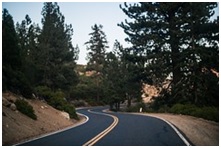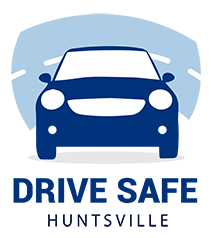Painted Markings

Also known as pavement markings, these are just the lines, arrows, and other symbols that you see painted on our roads. Actually, “just the lines” is a poor way to present that fact. The lines you see painted on the roads perform a critical function. Understanding them and observing the rules they convey can be the difference between a safe trip and a crash.
Center lines are used to denote travel lanes or to separate travel in one direction from the other. Yellow center lines indicate that travel on the other side of the line flows in the opposite direction of your travel. White lines typically divide travel flowing in one direction into separate lanes. Understand these colors and what it means when a line is broken or solid.

A single or double yellow line in the road means NO passing is allowed. With a double yellow, cars may not pass in either direction. On the other side of the yellow line is traffic coming directly at you. Just as with speed limit signs, planning and thought go into what type of lines should be painted on a particular stretch of road. A no passing area was deemed that for a reason. Much of the time, that reason can be a history of serious crashes. By the way, there is one reason it is permissible to cross solid yellow lines. That is when you are executing a left turn and must cross over the line.
A broken yellow line indicates that passing is allowed when safe. Remember, once you cross a broken yellow, you are driving against oncoming traffic. Never pass over a broken yellow unless you are sure you can pull out, pass a slower vehicle, and safely get back into your original lane. During such a move, neither the vehicle you pass nor any oncoming vehicle should have to alter their speed. If they do, you should not have passed in that area.
Sometimes, it is determined that passing may be safe in one direction but not in the other. That is when you will see the combination of a solid yellow line and a broken yellow line along side of it. You may only pass if the broken yellow line is on your side of the road. Again, all rules apply and you are driving against traffic when you cross the yellow lines.
WHITE LINES USUALLY DENOTE SEPARATE TRAVEL LANES
FLOWING IN THE SAME DIRECTION.
A solid white line separates multiple lanes of travel flowing in the same direction. You should avoid crossing solid white lines. Also note that these solid white lines appear as you approach intersections. When you approach such an intersection stay in your lane even if you discover you are not in the lane you want. With all the potential activity going on in and around intersections, the last thing needed is someone changing lanes, or worse, passing another vehicle. If you notice that a solid white line is wider than the typical line, it means that crossing over this wide line is still discouraged, but if you must cross, use extreme caution.
A broken white line indicates that passing is permissible. When you cross the line, you are still traveling in the same direction as other traffic. That does not mean that passing and lane changes are any less dangerous, though. Always signal and check your path before moving.

Solid white lines can appear along the side of the road as well. These lines usually mark the edge of the road and the beginning of the shoulder. The only time you should actually cross these lines is when you are pulling off the road and onto the shoulder or if you are turning right (left in some cases). If yellow lines are used for this purpose, you will usually see them on divided highways. You cannot cross over a yellow edge marker.
Double solid white lines will show up occasionally. Similar to double yellows, double white lines indicate no passing whatsoever is allowed, even though traffic is all going in the same direction.
Solid yellow and white lines have uses other than for
marking lanes and directions of travel:
- Crosswalks are marked with extra wide white lines.
- Loading or no parking zones may be marked with a grid of white or yellow painted lines.
- Fire lanes or other obstructions may display yellow lines.
- Wide wheelchair van accessible parking spaces may have a yellow grid pattern painted on them.
We’re not done with the paint yet! Remember, you may see arrows painted on the pavement at intersections. These arrows will indicate that turning only in the direction of the arrows is allowed from that lane. If you find you have entered the wrong lane, turn only in a permissible direction. Other drivers may notice the arrows in your lane and assume you will only turn in the direction of those arrows. You may startle them by doing otherwise and cause a crash. You, as a good defensive driver, know, of course, never to assume how a driver will turn because of painted markings. Focus on the other vehicles and not the arrows painted in their lane.
Railroad crossings and bike paths may have pavement markings as will school zones. Always treat any message painted on the pavement with the same respect you do any other traffic control device.
Finally, you have curb lines. In general, assume any painted curb line means no parking. In certain cases, standing – parking if you remain with the vehicle – is allowed or parking for a limited time is permissible.
Red Curb – Fires lane. Absolutely no parking or standing.
Yellow Curb – No parking.
Blue Curb – No parking with handicap access sticker or placard.
White Curb – Parking may be restricted. Check additional signage or local laws.
